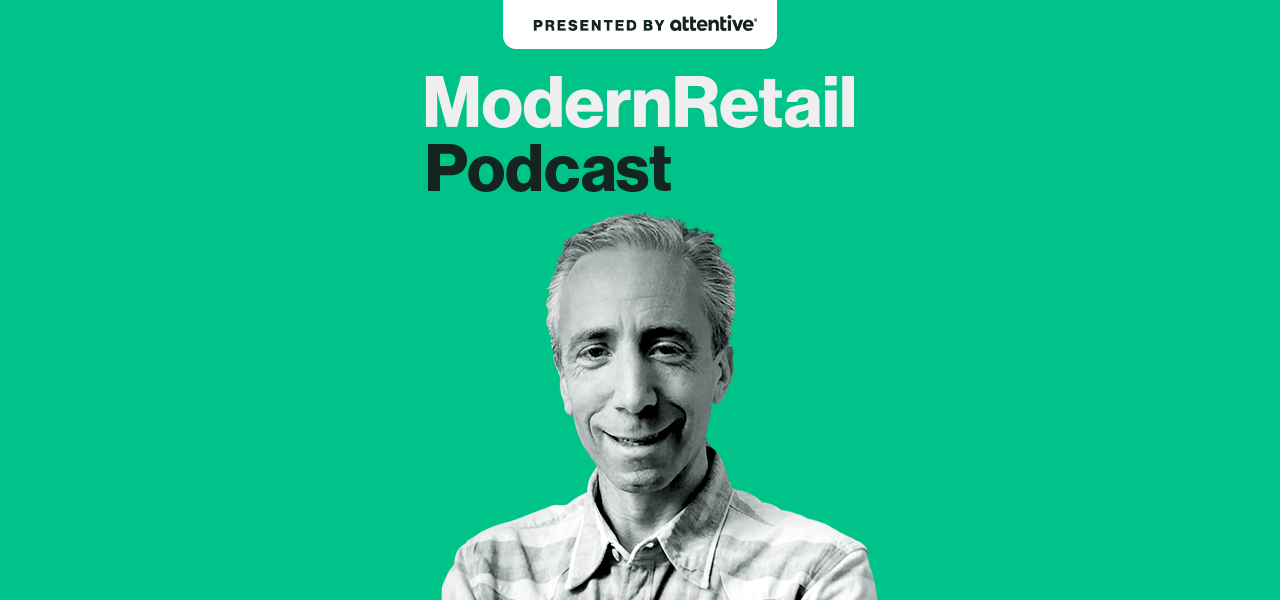‘We can be a lot faster’: Levi’s Marc Rosen on how the denim brand’s business has evolved

Subscribe: Apple Podcasts | Stitcher | Google Play | Spotify | RSS
Marc Rosen has worn many hats — or, perhaps, pants — at Levi’s.
Today, he’s the president of the apparel brand’s Americas business. But he’s been at the company for seven years — first joining to grow Levi’s e-commerce business. As such, he’s seen a lot of changes, both within the company and in retail as a whole. On the Modern Retail Podcast, Rosen spoke about what he’s been observing, as well as how his role at Levi’s has changed both over the years and during the pandemic.
Thinking back to the retail landscape almost a decade ago, Rosen said, “I think almost everything has changed.”
But, of course, many of the most drastic changes happened in the last year. And that also coincided with a new position for Rosen. Instead of just leading the online business, Rosen began overseeing all of Levi’s Americas business — including wholesale — in January of 2020. As such, the pandemic was certainly a crash course in navigating a new facet of the brand’s business.
“The wholesale world, to some extent, for me was new,” he said. “It was really a learning experience about building that relationship.”
Much of that learning experience was focused on figuring out where and how people were shopping. For example, while Levi’s is available in many brick and mortar stores, it also has wholesale relationships with online retailers. “Consumers moved so quickly into digital,” Rosen said, and the first part of the pandemic was working both inside Levi’s and with partners to try and navigate that shift.
Ad position: web_incontent_pos1
This also brought about a big change in how Levi’s as a company rolled out new products. For large companies, it’s hard to adopt a startup-like ethos of test and learn. But during a global pandemic, that’s all retailers were able to do. They had to adapt in an instant, launch and figure things out from there. The big lesson Rosen learned, he said, is “we can be a lot faster.” Instead of very slowly building something internally, more programs can see the light of day faster and be iterated upon.
The pandemic, he said, brought about these lessons. Normally, he explained, “we probably would have built [out a new feature or program], and waited until it was perfect to roll it out. But in a pandemic, you don’t have that luxury.”
Here are a few highlights from the conversation, which have been lightly edited for clarity.
On finding the consumer during a pandemic
“One of the things that we saw [when the pandemic first hit] was you need to be where consumers are shopping. And consumers so quickly moved into digital — the digital penetration went up massively. And that was in our owned and operated, but also in our wholesale-dot-com and our pure play. So it really was about understanding how the consumer was going to shop, and making sure that we were there for them with the right product and the right inventory. And that we could serve them. In our owned and operated, it was: ‘how do we use the tools and the things that we had put together to really provide the consumer the experience that we could and wanted to during the pandemic?'”
A new product development ethos
“I think there are certain things [product development-wise] that you need to wait — you need to have it fully built out — and then you need to make sure that it rolls out only at that point. I think there are a lot of other things — and really the majority of things [that can be rolled out more quickly]. I think that first bucket is probably only 10%; Pre-pandemic, we probably falsely convinced ourselves that that was the majority of the things. The reality is, it isn’t and we can be a lot faster. The majority of things are [new programs] that we can really try with a hack, roll out to a small number of consumers, learn, test, adjust and be very agile about continuing to add features and functions and get it out more quickly.”
Ad position: web_incontent_pos2
TikTok is how Gen Z shops
“In April of 2020, we launched an integration with TikTok, and we were one of their first partners that was in their ‘shop now’ program — which gives the consumers the option to purchase items that they love that they see on TikTok. So we were in that launch, we’ve been using it going forward and we’ve seen really good success with the younger and Gen Z consumer in terms of reaching them and showing them new product. The great thing about TikTok is not only do [people] see the product — but they see how to wear it, they see it with influencers and people that they know and trust. Then it turns into a purchase. I do think, in a lot of ways, that is the way that the youth are going to shop.”

